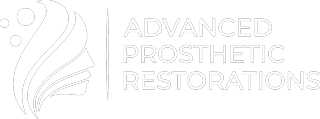About Anaplastology:
Anaplastology is the art and science of restoring a malformed or absent part of the human body through artificial means. The field of Anaplastology functions within the larger medical and dental community, where cross disciplinary communication and collaboration are essential in order to provide our patients with a successful prosthetic restoration and a positive treatment experience. services to help improve their quality of life.
Our process:
Each patient’s journey through their rehabilitative experience is unique. Some treatments may have a longer or shorter timeline depending on the method of retaining the prosthesis to the body.
During this appointment Suzanne Verma will meet with you to get an understanding of your needs and concerns. We will review medical history, examine the affected area, and discuss treatment options. You and your family will have the opportunity to see examples of Ms. Verma’s prosthetic work, and ask questions about the process and timeline. You are guaranteed that all clinical and laboratory work associated with your prosthetic treatment will be done by Suzanne Verma, who has a Master’s degree, and is certified by the Board for Certification in Clinical Anaplastology.
Depending on the method of retention that your prosthesis uses (such as medical adhesive or craniofacial implants with magnet or bar and clip attachments) there will be information that must be gathered to plan your next step.
If you are pursing treatment with an IMPLANT RETAINED PROSTHESIS you will be coordinating your next steps with a surgeon to surgically place the osseointegrated implants which the prosthesis will later connect to. Ms. Verma will work with the surgeon to plan the ideal location of the implants. Steps for surgical planning may include photos, impressions, or acquiring various digital or medical scans which would be ordered by your referring physician or surgeon.
Your surgeon will surgically place the craniofacial implants in a one or two stage procedure. The implants will have to osseointegrate (biologically connect with the surrounding bone) for 3-6 months. This healing timeframe will vary from patient to patient depending on various factors such as previous radiation treatment, tissue or wound healing, and site of the implants. Your referring surgeon will coordinate with Ms. Verma to decide when you are ready for the next step of fabricating the prosthesis.
Fabrication of your prosthesis
Prosthesis Fabrication takes approximately 6-8 steps, which is equivalent to approximately 5-7 appointments. The process will include more steps if your prosthesis is implant retained. These steps can be combined into longer appointments to help facilitate out of town patients.
Steps involve clinical and laboratory time:
1. Abutment connection (if implant retained) and Impressions
Impressions Appointment:
The first step in creating your prosthesis is an impression. During this appointment, impression material will be applied to the area of the face where the prosthesis is to be made to “capture” the shape and make a stone duplicate to be utilized as a base for the prosthesis. This step will only be scheduled once your skin has fully healed from any previous surgeries.
2. For orbital prostheses, the ocular shell is made off site at any time.
3. Substructure fabrication (If Implant retained)
If your prosthesis will be bar and clip retained, allow time after impressions for bar to be fabricated through CAD design and 3D Printing off site and mailed.
4. Clinical Sculpting sessions
During clinical sculpting the wax sculpture of the future prosthesis is tried on the patient and Ms. Verma will make modifications. This appointment allows the patient the opportunity to give feedback on the size, position and shape of the future prosthesis. The sculpting appointment can be combined with other steps in the process.
5. Color Matching session
The color matching session is the clinical step where Ms. Verma will pigment the silicones to match your skin. These silicones will be used to make your prosthesis uniquely yours. The color matching appointment can also be combined with other steps.
6. Mold Making
Mold making is a laboratory step completed by the Anaplastologist without the patient present. During this step the wax sculpture is used to create a stone mold that is unique to the patient. Once a mold has been created the shape, size and position of the prosthetic form is “set in stone.” This mold is used to create the final form in silicone.
7. Intrinsic painting of the mold
Custom pigmented silicone is painted into the mold layer by layer to recreate the patient’s skin coloration down to details of freckles and veins. This step may be combined with others for patients traveling.
8. Extrinsic coloring and trimming
After the silicone has been processed in the laboratory the final flexible silicone prosthesis is tried on the patient, the edges are trimmed and additional coloration is applied extrinsically to blend the margins. This step may be combined with final delivery of the prosthesis.
9. Delivery of the final prosthesis
The final prosthesis is given to the patient. At this appointment the patient learns how to apply and remove the prosthesis as well as reviewing important instructions on how to care for their prosthesis and their skin.

